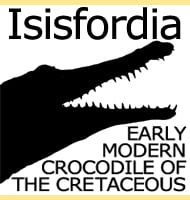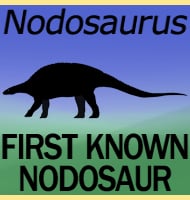In Depth
The most notable features of Eusthenopteron are the powerfully built pectoral and pelvic fins. This led to early speculation that Eusthenopteron could use these fins to crawl out of the water and onto land. This in turn led to Eusthenopteron being classed by some as a link to the early tetrapods.
Today however, Eusthenopteron is more widely accepted to have stayed in the water, but developed the parts that would allow for the evolution of legs. Reinforcement for this view comes from the study of transitional fossils such as Tiktaalik, which seems to suggest that primitive legs would have evolved in creatures that were still primarily aquatic. These continuing adaptations including primitive fingers and leg joints for navigating dense weeds and shallow waters, also proved useful for terrestrial locomotion as well.
Eusthenopteron did still have some of the features that would become present in later terrestrial amphibians. The teeth displayed folded enamel like the labyrinthodonts, and it also had internal nostrils. The bones of the pectoral fins also display clear upper and lower portions with bones that are analogous to a humerus, ulna and radius. The pelvic fins also have a similar arrangement but the bones here would be the equivalent of a femur, tibia and fibula.
Further Reading
– On some remarkable fossil fishes from the Devonian rocks of Scaumenac Bay, in the Province of Quebec – Joseph Frederick Whiteaves – 1881. – Juvenile specimens of Eusthenopteron foordi Whiteaves, 1881 (Osteolepiform rhipidistian, Pisces) from the Late Devonian of Miguasha, Quebec, Canada. – H. P. Schultze – 1984. – Vertebral development in the Devonian Sarcopterygian fish Eusthenopteron foordi and the polarity of vertebral evolution in non-amniote tetrapods – S. Cote, R. Carroll, R. Cloutier & L. Bar-Sagi – 2002. – A microanatomical and histological study of the paired fin skeleton of the Devonian sarcopterygian Eusthenopteron foordi – M. Laurin, F. J. Meunier, D. Germain & M. Lemoine – 2007. – A microanatomical and histological study of the fin long bones of the Devonian sarcopterygian Eusthenopteron foordi – Fran�ois J. Meunier & Michel Laurin – 2012. – The humerus of Eusthenopteron: a puzzling organization presaging the establishment of tetrapod limb bone marrow. – Proceedings of the Royal Society B: Biological Sciences, 281 (1782): 20140299. – S. Sanchez, P. Tafforeau & P. E. Ahlberg – 2014.











